Monthly Cell Challenge #4 / 2025
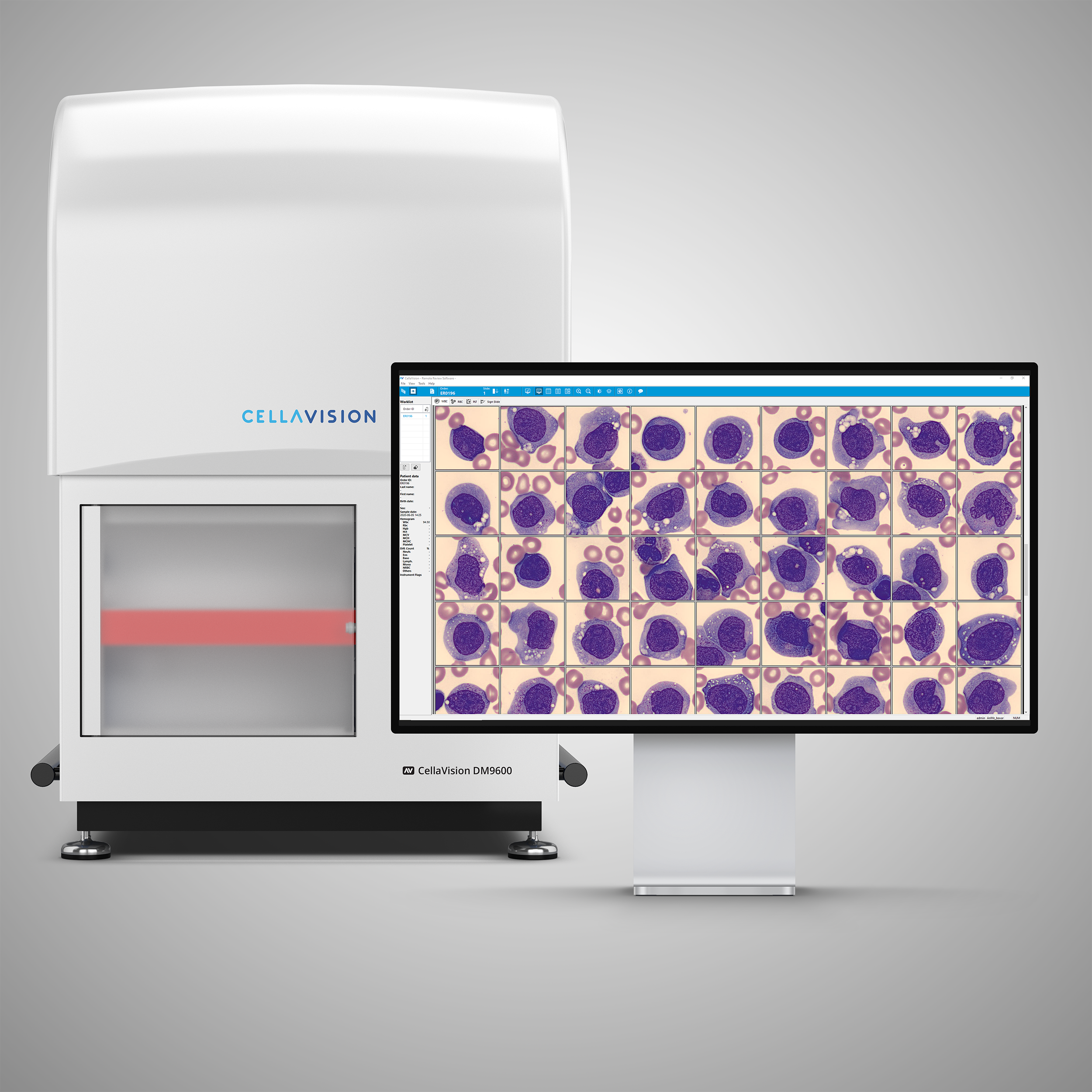
2-year-old with large blast-like cells
A 2-year-old girl went to a pediatrician with her parents because of unexplained fever, fatigue, weakness, weight loss and shortness of breath. They also noticed small red spots on the skin and easy bruising. The pediatrician ordered a CBC and differential.
CBC results:
| Test | Result | Units |
|---|---|---|
| WBC | 94,5 | x109/L |
| HGB | 66 | g/L |
| MCV | 77 | fL |
| PLT | 11 | x109/L |
Smear analysis on CellaVision® DM-9600:
| WBC Differential | % | x109/L |
|---|---|---|
| Band neutrophils | 2,9 | 2,7 |
| Neutrophils | 16,3 | 15,4 |
| Basophils | 1,9 | 1,8 |
| Lymphocytes | 10,6 | 10,0 |
| Monocytes | 15,4 | 14,6 |
| Blasts | 52,9 | 50 |
| NRBC | 24/100 WBC | |
In the CellaVision® Remote Review Software, the on-call hematopathologist could see that there was neutropenia with toxic granulation, some large granular lymphocytes (LGLs), monocytes with immature appearance, and a high number of nucleated red blood cells (NRBC) in varying maturation stages and dysplastic features.
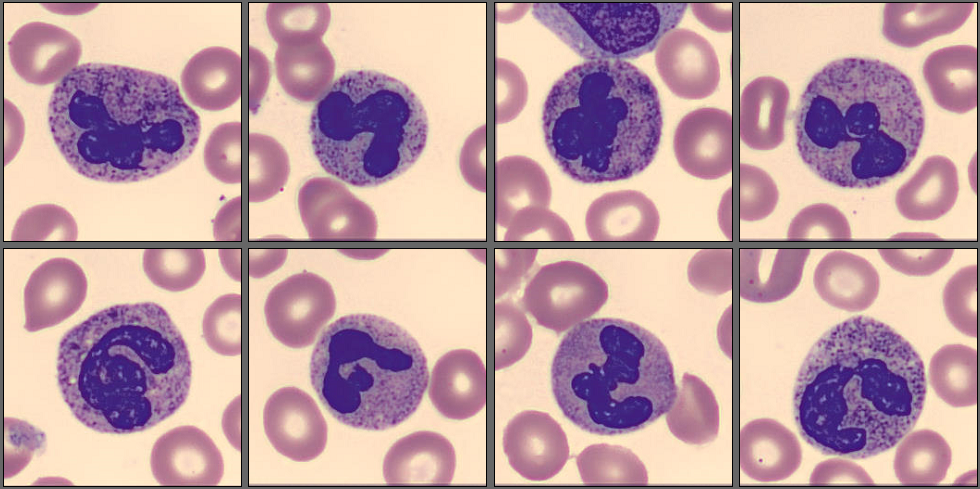

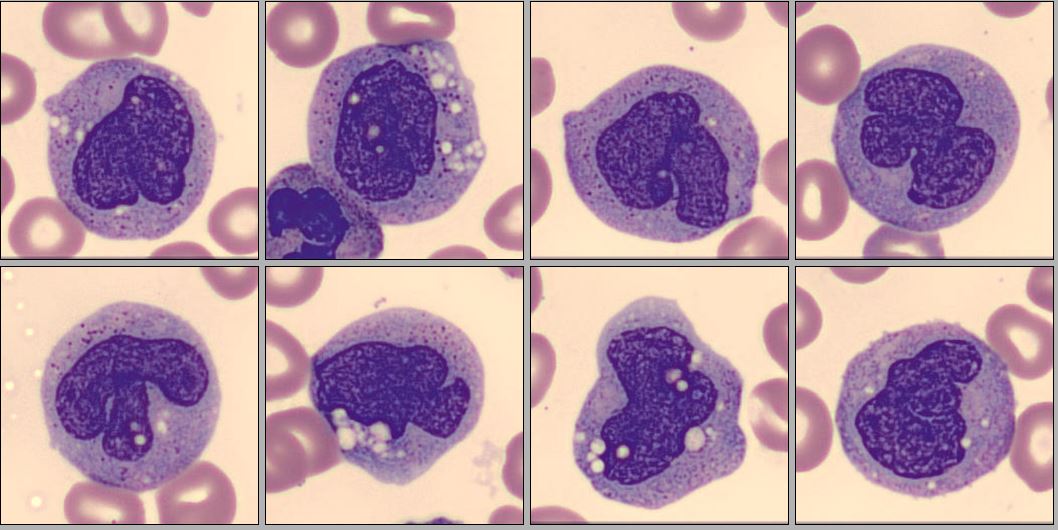
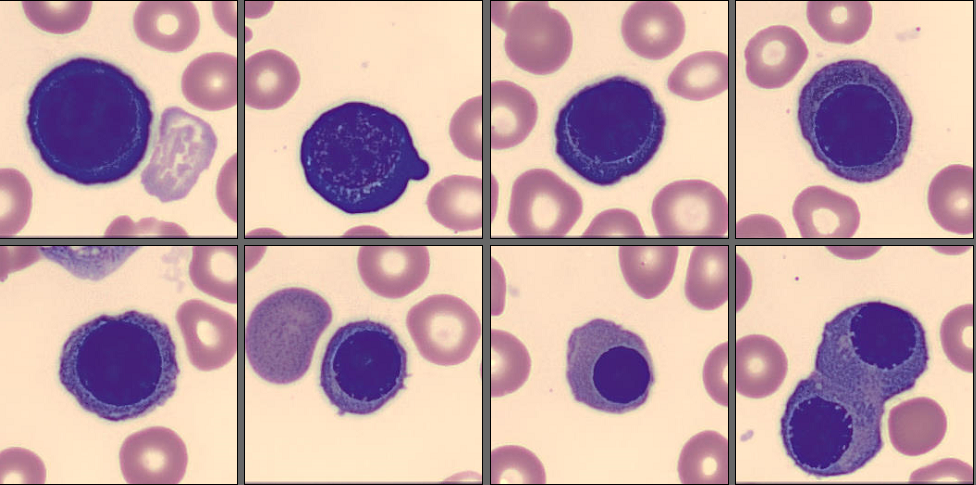
She could also see a high number of large immature cells with blast like nuclei, and with one or more nucleoli, abundant basophilic cytoplasm with fine scattered azurophilic granules and vacuolization.
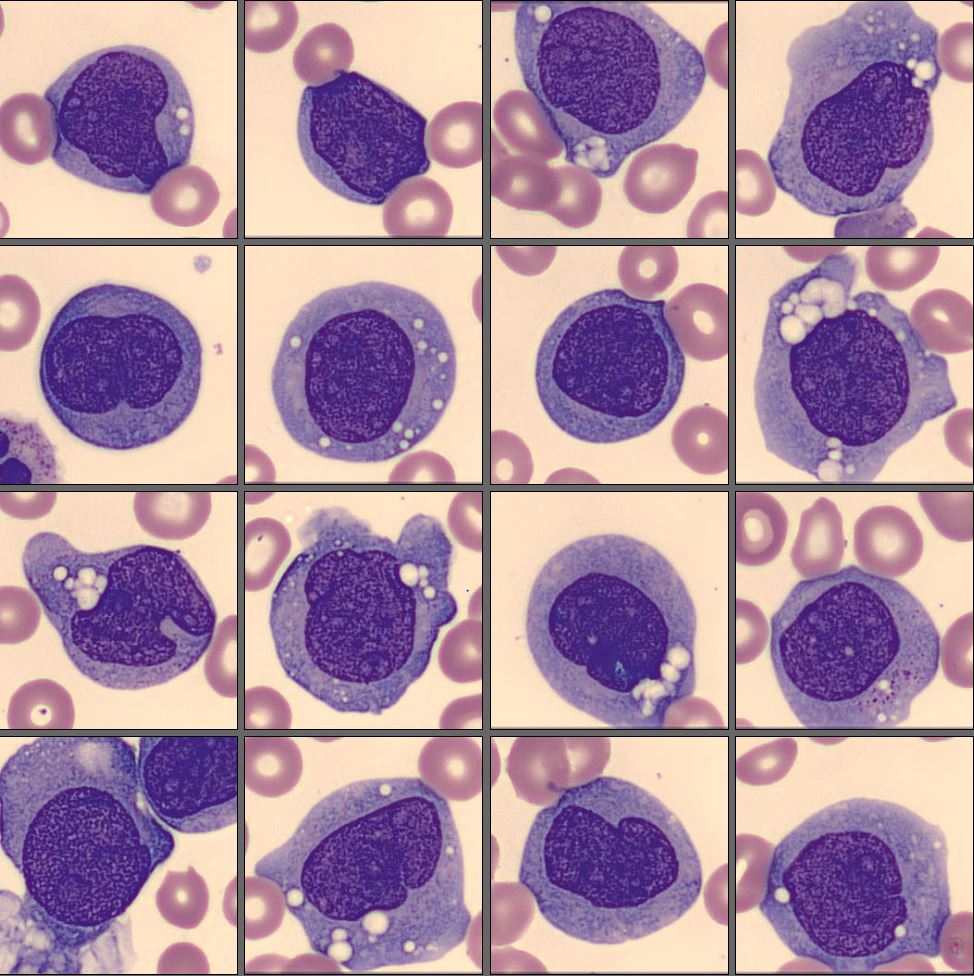
Some of these immature cells showed folded and convoluted nuclei, with fine lace-like chromatin structure and a grey blue cytoplasm with azurophilic granules and vacuoles.
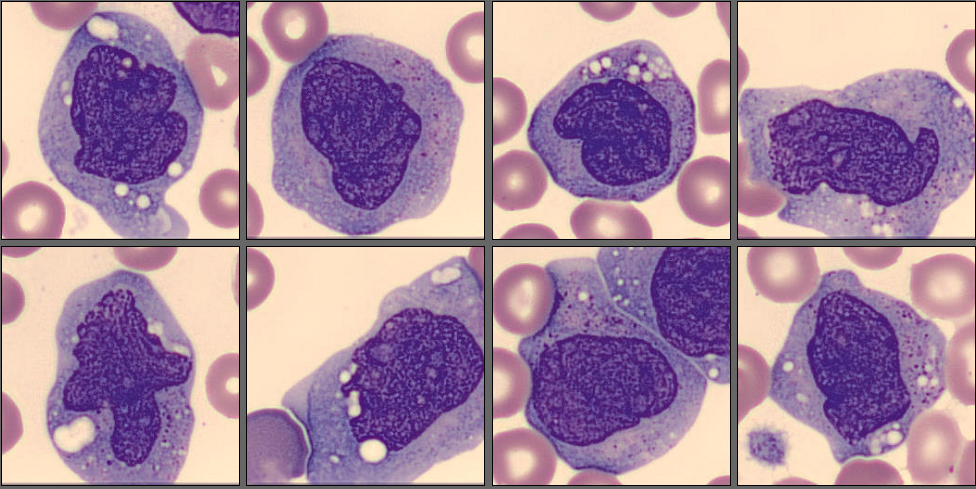
Flow cytometry: CD2-, CD4+, CD10-, CD11b+, CD14+, CD19-, CD22-, CD34+, CD64+, HLA-DR+.
Diagnosis:
Acute monocytic leukemia (AMoL)
Discussion:
The little girl was diagnosed with Acute monocytic leukemia. The finding in the CellaVision® Remote Review Software could direct the medical staff to order the correct types of cytochemistry, immunohistochemistry, flow cytometry, and molecular tests.
Acute monocytic leukemia is a rare and aggressive form of acute myeloid leukemia (AML) that involves the monocyte lineage.
It is a disease seen in all ages and accounts for approximately 15-24% of all pediatric AML cases and in about 3-6% of all diagnosed AML cases. [1][2]
Do you want to learn more about AML? Watch the Global test 2025:1 here!
References:
[1] Marcogliese. AN., Haferlach. T., Nejati. E., Tembhare. PR. Acute myelomonocytic leukaemia. In: WHO Classification of Tumors series, 5th ed.; vol 11, IARC publications, https://publications. Iarc.who.int/637. 2024. p. 155-156.
[2] Varotto. E., Munaretto. E., Stefanchi. F., DellaTorre. F., Buldini. B. Diagnostic challenges in acute monoblastic/monocytic leukemia in children. Front Pediatr. 2022 Sep 28 doi: 10.3389/fped.2022.911093